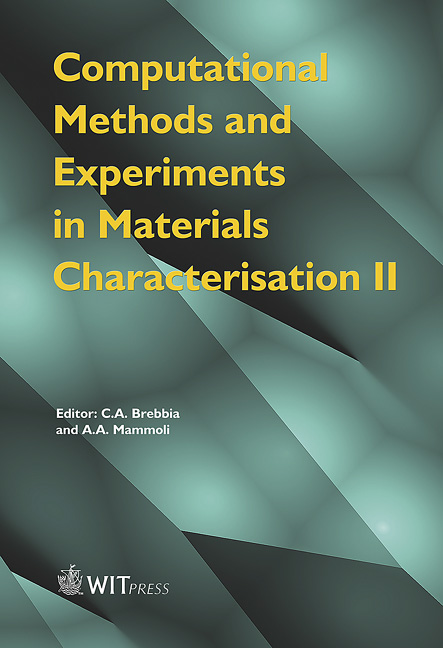A Comparison Between Static And Dynamic Inverse Modelling For The Identification Of Orthotropic Elastic Material Parameters
Price
Free (open access)
Transaction
Volume
51
Pages
9
Published
2005
Size
595 kb
Paper DOI
10.2495/MC050291
Copyright
WIT Press
Author(s)
D. Lecompte, T. Lauwagie, H. Sol, W. Heylen & J. Vantomme
Abstract
This paper compares two different Mixed Numerical-Experimental Techniques (MNET) to determine the in-plane elastic properties of sheet materials. The first technique (the static method) is based on the inverse analysis of statically loaded perforated specimens. The applied load is measured with a load cell, while Electronic Speckle pattern interferometry is used for the measurement of the entire displacement field. Strains are calculated based on the gradient of the measured displacement field. The second technique (the dynamic method) is a vibration-based MNET. This technique requires the fundamental flexural and torsional frequencies of a set of rectangular beam-shaped specimens as experimental data. The resonant frequencies are obtained by exciting the test samples acoustically and capturing the vibration response with a laser Doppler vibrometer. In the numerical phase of both techniques, the orthotropic material parameters are identified by simultaneously updating the elastic properties of the finite element models of the test specimens. The updating process is driven by the least-squares minimisation of the differences between the measured and the calculated strains for the first technique and resonant frequencies for the second technique. Keywords: inverse modelling, parameter identification, elastic behaviour, sheet materials.
Keywords
inverse modelling, parameter identification, elastic behaviour, sheet materials.





